Welcome to the fascinating world of axolotls! If you’re curious about these extraordinary amphibians and want to explore the diverse types of axolotls, you’ve come to the right place.
In this comprehensive guide, we’ll dive into the different types of axolotls, their unique characteristics, care needs, and much more.
By the end of this article, you’ll have a deeper understanding of these remarkable creatures and be better equipped to care for them.
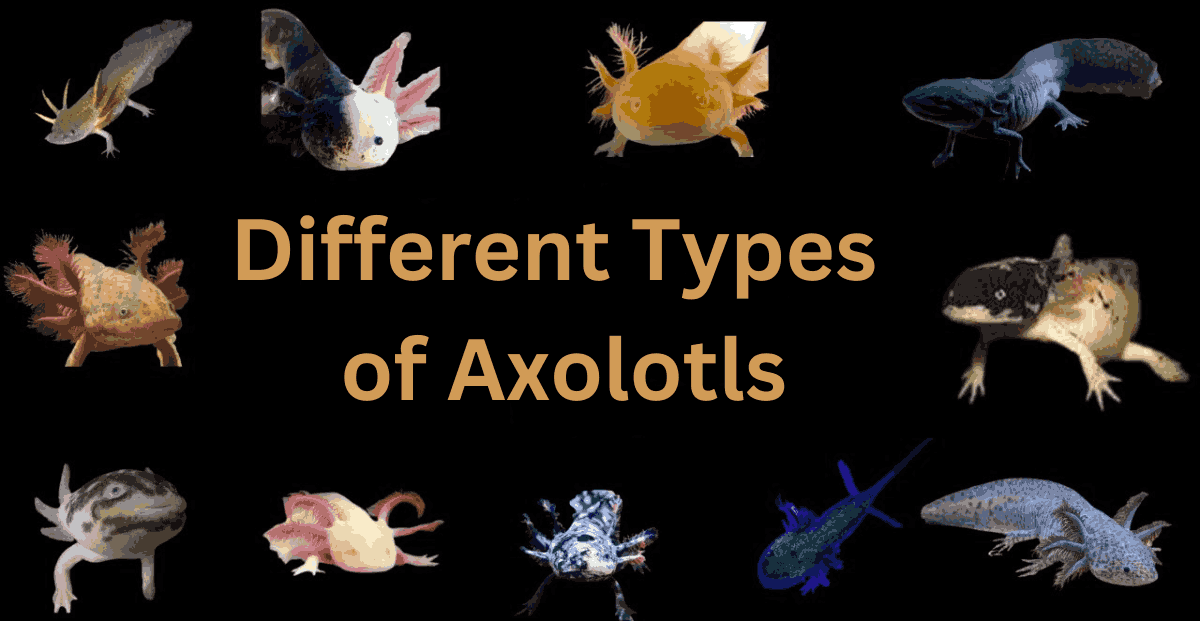
Contents
- Exploring the Different Types of Axolotls
- Discover the Diversity: Different Types of Axolotls Explained!
- FAQs:
- Conclusion:
Exploring the Different Types of Axolotls
Axolotls are a type of salamander native to Mexico, known for their unique ability to regenerate body parts and their neotenic features, which means they retain some juvenile characteristics throughout their lives.
Let’s explore the diverse types of axolotls in detail:
Wild Type Axolotl:

The wild type axolotl, also known as the “standard” axolotl, features a dark green or brownish body with spots scattered across its skin. These spots can vary in size and distribution, giving each wild type axolotl a distinctive appearance.
Characteristics:
- Dark green or brown body
- Spotted skin pattern
- Medium-sized
- Retains juvenile characteristics
Care Requirements:
- Tank size: 20 gallons or larger
- Water temperature: 60-70°F (15-21°C)
- pH level: 7.0-7.5
- Diet: Worms, insects, small fish
Leucistic Axolotl:

The leucistic axolotl is characterized by its pale pink or white skin and lack of pigmentation. Unlike albino axolotls, which have red eyes, leucistic axolotls have black eyes. They are one of the most popular axolotl morphs due to their striking appearance.
Characteristics:
- Pale pink or white body
- Black eyes
- Lack of pigmentation
- Retains juvenile characteristics
Care Requirements:
- Same as wild type axolotls
- Read More :- What is an Axolotl?
- Read More :- How Long Do Axolotls Live in Compared to the Wild?
Albino Axolotl:
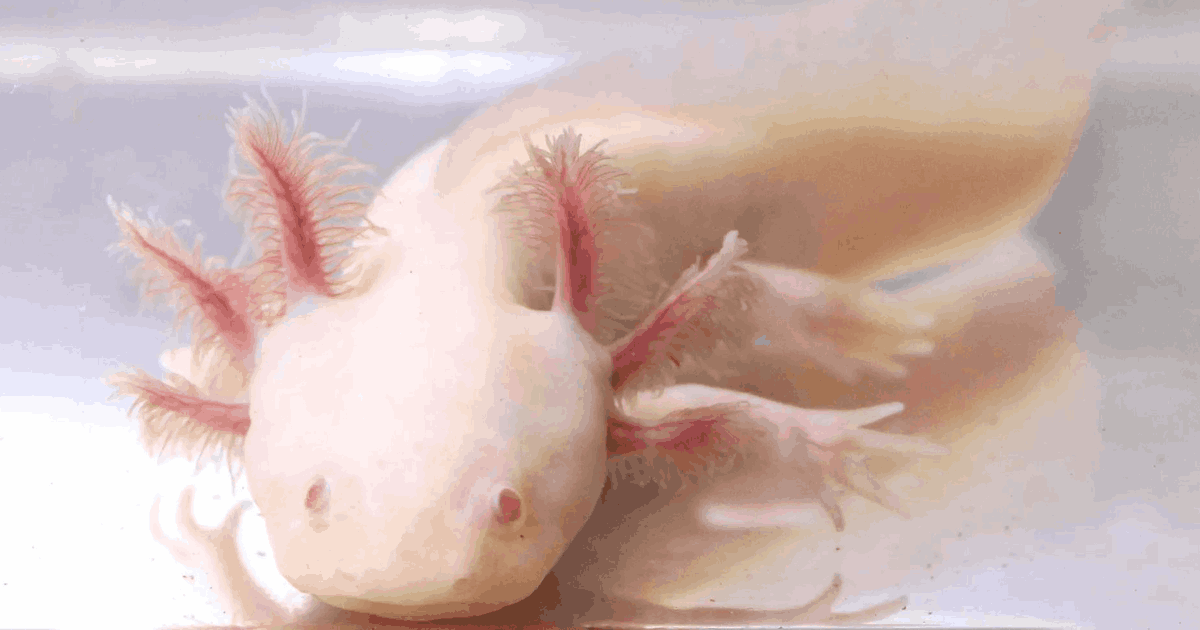
Albino axolotls lack melanin, resulting in a pinkish-white body and bright red eyes. They are one of the most recognizable types of axolotls and are highly sought after by enthusiasts.
Characteristics:
- Pinkish-white body
- Bright red eyes
- Lack of melanin
- Retains juvenile characteristics
Care Requirements:
- Same as wild type axolotls
Melanoid Axolotl:
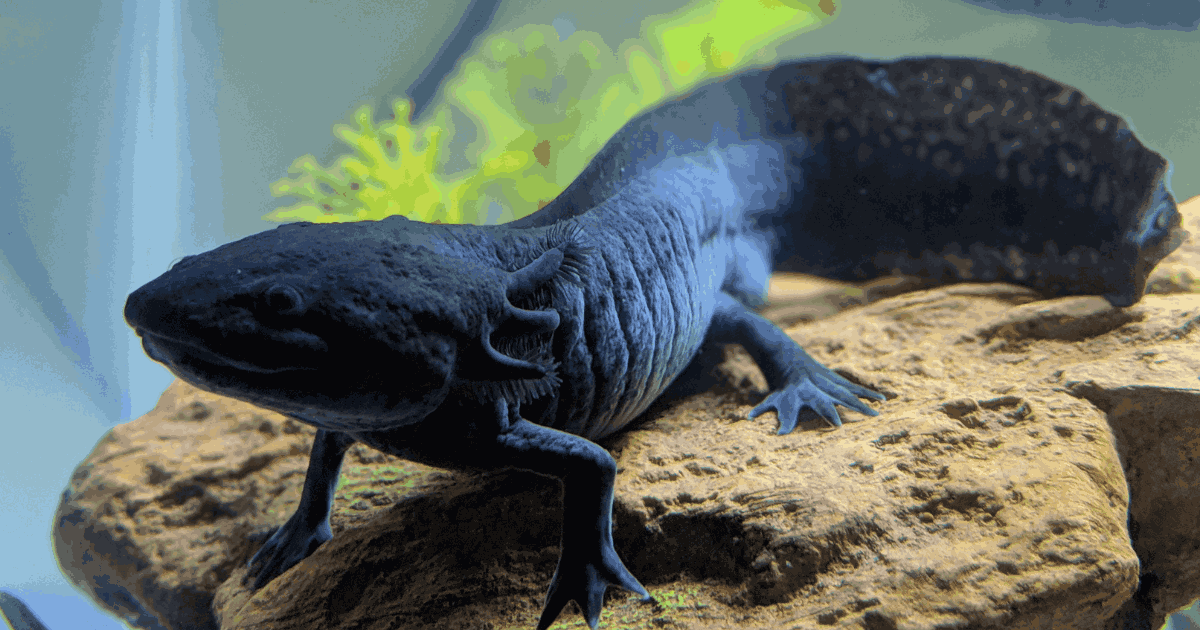
Melanoid axolotls are characterized by their dark, almost black, coloration and lack of any visible spots. They have a sleek appearance and are prized for their unique coloring.
Characteristics:
- Dark, almost black, body
- No visible spots
- Sleek appearance
- Retains juvenile characteristics
Care Requirements:
- Same as wild type axolotls
GFP Axolotl:

GFP (Green Fluorescent Protein) axolotls have been genetically modified to produce a green fluorescent protein, causing them to glow under UV light. This morph is popular among researchers and hobbyists alike.
Characteristics:
- Glows green under UV light
- Various body colors (wild type, leucistic, albino, etc.)
- Retains juvenile characteristics
Care Requirements:
- Same as wild type axolotls
Piebald Axolotl:
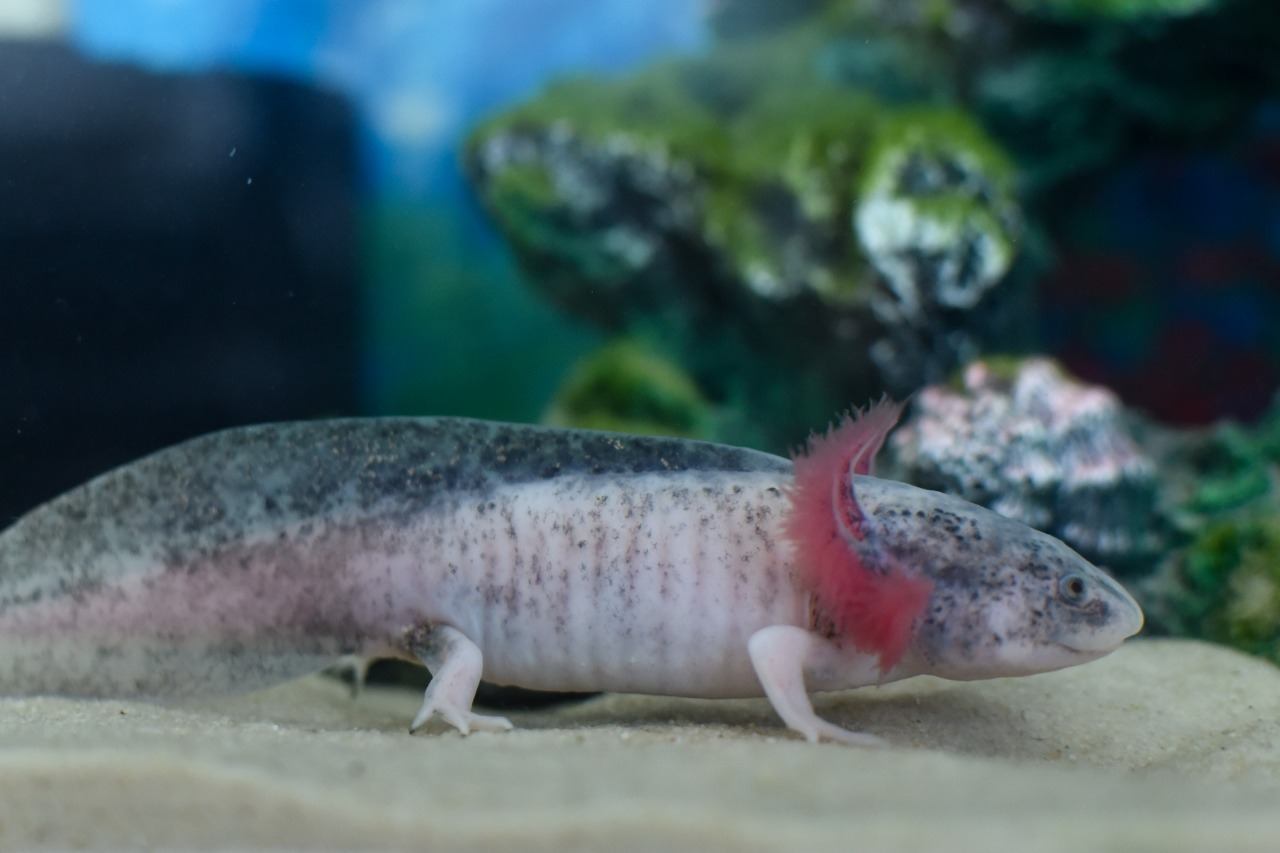
Piebald axolotls have a unique piebald pattern, featuring patches of pigmented and non-pigmented skin. This gives them a striking appearance and makes them highly desirable among axolotl enthusiasts.
Characteristics:
- Piebald pattern
- Patches of pigmented and non-pigmented skin
- Retains juvenile characteristics
Care Requirements:
- Same as wild type axolotls
- Read More :- Life Cycle of an Axolotl with Pictures
- Read More :- What Do Axolotls Eat in Minecraft – Complete Guide 2024
Chimera Axolotl:

Chimera axolotls are rare and unique. They are the result of two embryos fusing together, creating an individual with two distinct sets of DNA. Chimera axolotls can exhibit a combination of different colors and patterns.
Characteristics:
- Two distinct sets of DNA
- Varied colors and patterns
- Rare and unique
Care Requirements:
- Same as wild type axolotls
Axanthic Axolotl:
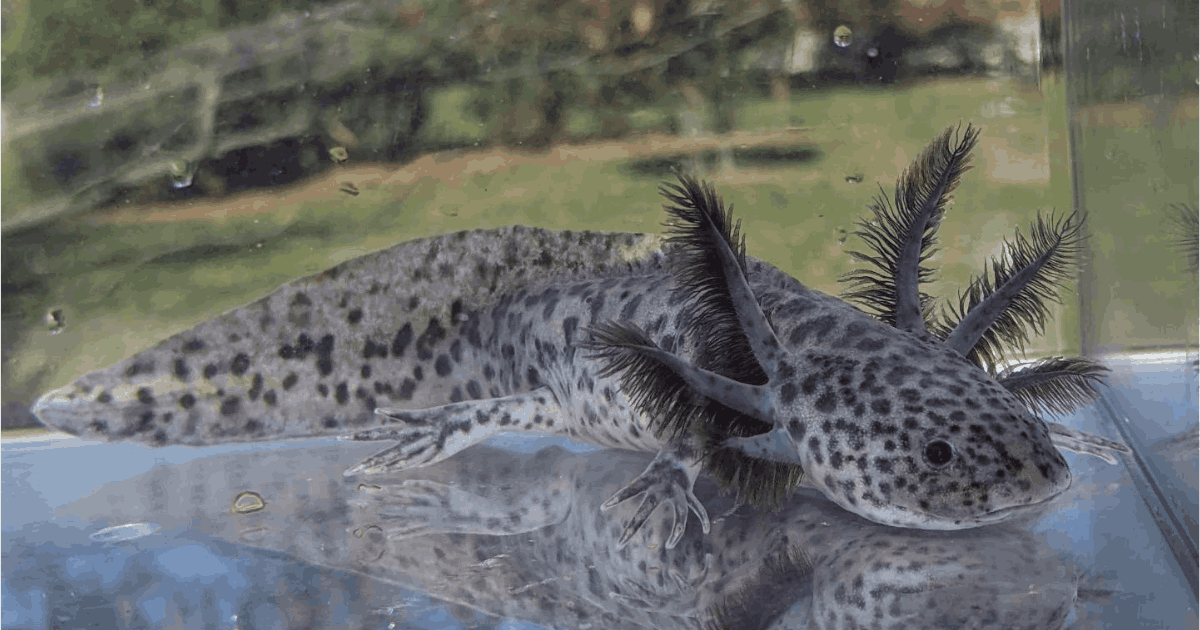
Axanthic axolotls lack the yellow pigment xanthophores, resulting in a predominantly grey or silver body coloration. They can have various patterns, including spots, stripes, or a uniform color.
Characteristics:
- Grey or silver body coloration
- Lack of yellow pigment
- Varied patterns (spots, stripes, or uniform color)
- Retains juvenile characteristics
Care Requirements:
- Same as wild type axolotls
Copper Axolotl:
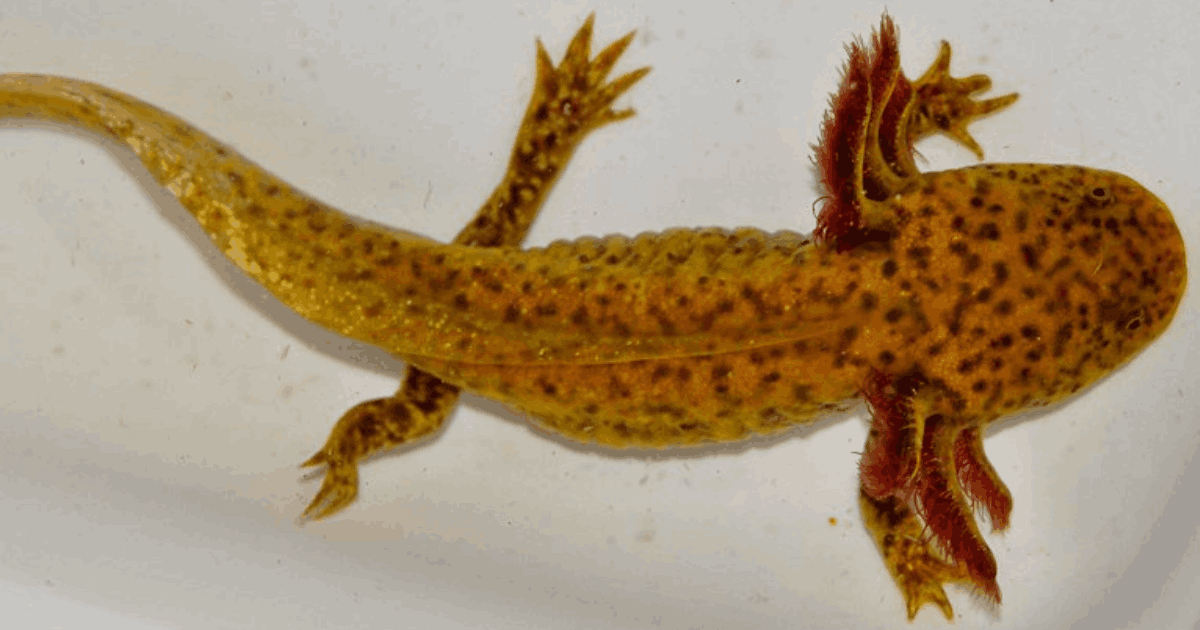
Copper axolotls have a unique copper-colored body with dark eyes. They are known for their stunning appearance and are highly prized among axolotl enthusiasts.
Characteristics:
- Copper-colored body
- Dark eyes
- Retains juvenile characteristics
Care Requirements:
- Same as wild type axolotls
Golden Axolotl:
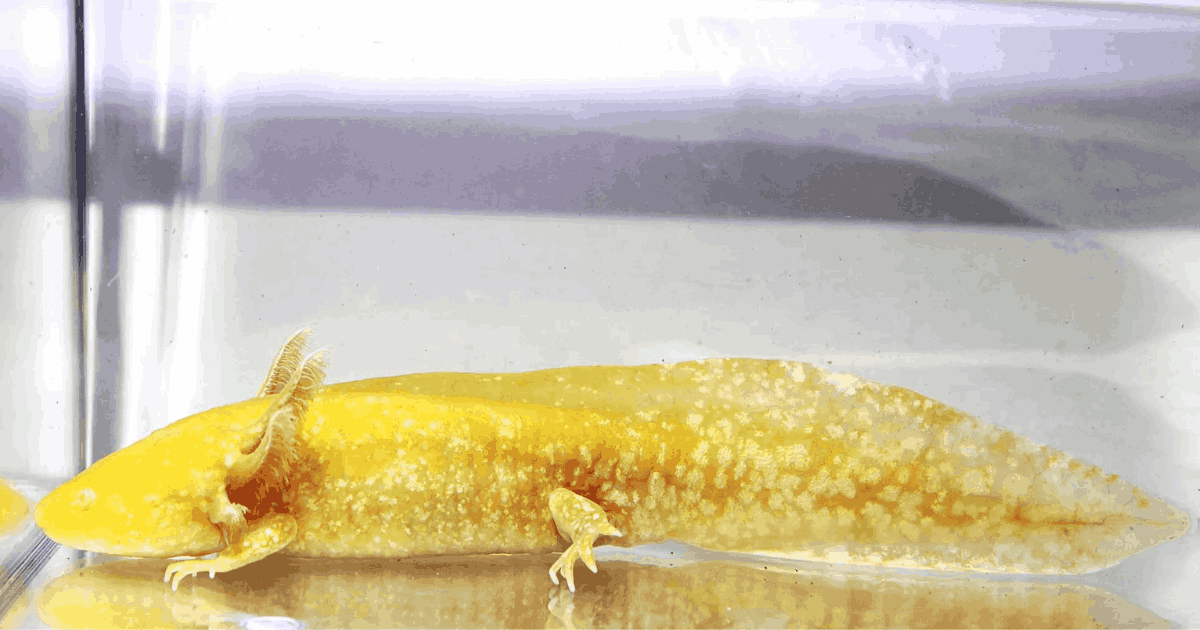
Golden axolotls have a bright yellow or gold body coloration, resembling the color of goldfish. They are relatively rare and highly sought after by collectors.
Characteristics:
- Bright yellow or gold body coloration
- Retains juvenile characteristics
Care Requirements:
- Same as wild type axolotls
Platinum Axolotl:
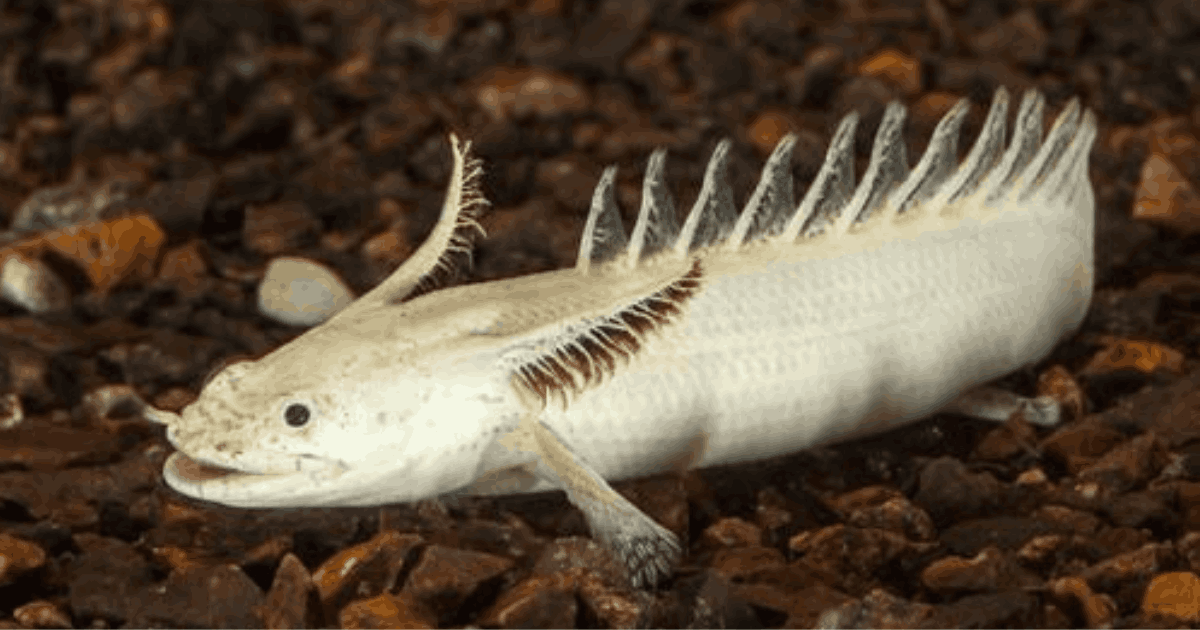
Platinum axolotls have a silvery-white body coloration with black eyes. They are prized for their unique and elegant appearance.
Characteristics:
- Silvery-white body coloration
- Black eyes
- Retains juvenile characteristics
Care Requirements:
- Same as wild type axolotls
Blue Axolotl:
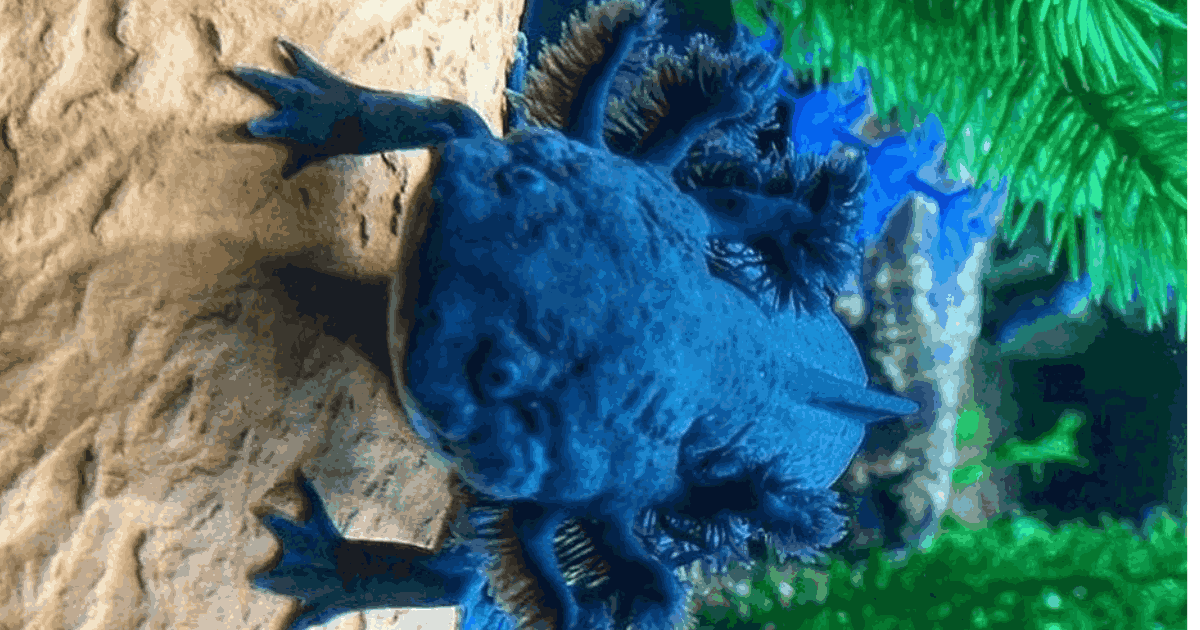
Blue axolotls have a stunning blue body coloration, making them a favorite among axolotl enthusiasts. They are relatively rare and highly prized for their striking appearance.
Characteristics:
- Blue body coloration
- Retains juvenile characteristics
Care Requirements:
- Same as wild type axolotls
Discover the Diversity: Different Types of Axolotls Explained!
Now that you’ve learned about the different types of axolotls, it’s time to explore some frequently asked questions:
FAQs:
What is the lifespan of an axolotl?
Axolotls typically live for 10 to 15 years in captivity, although some have been known to live for up to 20 years with proper care.
Do axolotls make good pets?
Yes, axolotls can make excellent pets for the right person. They are low-maintenance, fascinating to observe, and relatively easy to care for.
Can axolotls regrow lost limbs?
Yes, one of the most remarkable abilities of axolotls is their capacity for regeneration. They can regrow lost limbs, tails, and even parts of their brain and heart.
What do axolotls eat?
Axolotls are carnivorous and primarily eat small prey such as worms, insects, and small fish. In captivity, they can be fed a diet of bloodworms, earthworms, and commercial axolotl pellets.
Do axolotls require a specific habitat?
Yes, axolotls require an aquarium with clean, cool water and plenty of hiding places. A sandy substrate and live or artificial plants can also provide enrichment.
Are axolotls endangered?
Yes, axolotls are listed as critically endangered in the wild. Their natural habitat, Lake Xochimilco in Mexico, has been greatly reduced due to urbanization and pollution.
Conclusion:
Axolotls are truly remarkable creatures with a wide range of colors, patterns, and unique characteristics. Whether you’re a seasoned axolotl enthusiast or just starting your journey with these fascinating amphibians, there’s always something new to discover.
By understanding the different types of axolotls and their care requirements, you can provide the best possible environment for these extraordinary animals.
